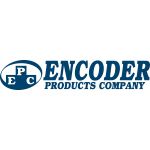Artificial Intelligence in Manufacturing
Lean Manufacturing: Eliminate the 7 Wastes With Self-driving Vehicles
Webalo Launches No-Code App Generation Platform for IIoT
Is Google Glass Staging A Comeback?
Why Direct Drive?
HPC Trends - Why the CFD Community Must Be 'Proactive' Not Reactive
Adidas is using robots to produce small-batch, local-market shoes
Field Logic Controllers (FLCs) expand control options for industrial environments
Technological Trends and Practical Examples of the Fourth Industrial Revolution
Veo Robotics raises $12 million to help machines and humans collaborate more efficiently
Apple and GE just put iOS inside Industry 4.0
Measures to Cope With Reversed Energy
Cooperation between SICK and Silicon Software implements VisualApplets
Red Lion Case Study: Blizzard Ski
Makerbot Labs Is One Step Toward Open Source 3D Printing
Records 2281 to 2295 of 3072
First | Previous | Next | Last
Featured Product

ResinDek® TRIGARD® ESD ULTRA FOR HIGH-TRAFFIC ROBOTIC APPLICATIONS
Manufacturing and Automation - Featured Company

